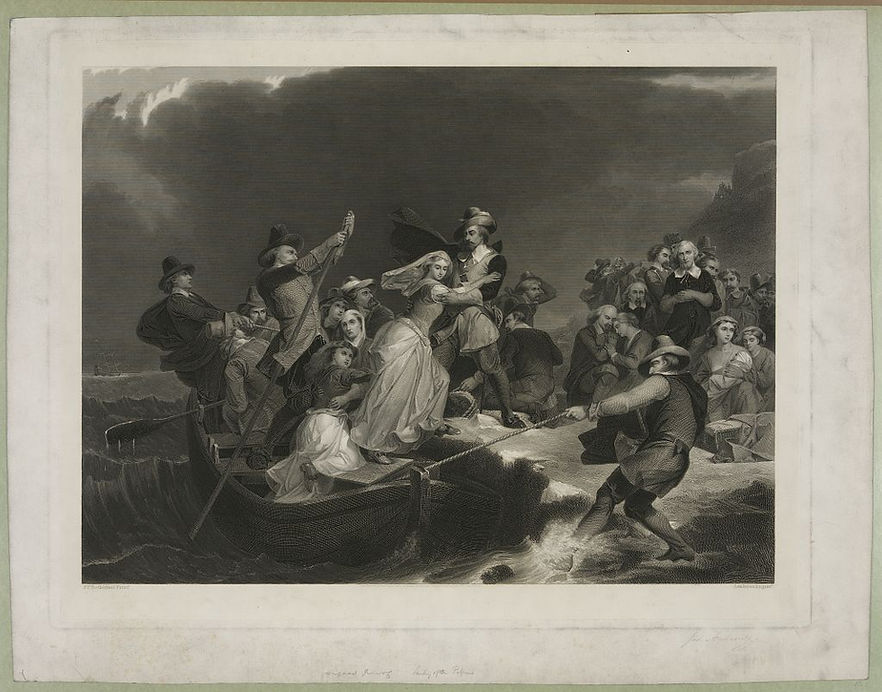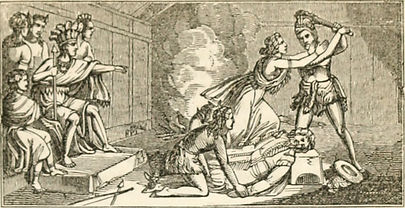
Colonies
At AntiTextbook.org, we have curated the best active learning lesson plans for American History Teachers. We have sifted through the resources on amazing free sites like Digital Inquiry Group (formerly S.H.E.G.), Gilder Lehrman, and Facing History and Ourselves. We’ve picked the best activities and given you a brief description. You could skim through these sites yourself and read each of the 15-page activity descriptions. Or you can let us do the work of searching and synthesizing for you.
Each box below contains a lesson. The icons under each image tell you if the lesson contains primary sources, secondary sources, research, group work, a writing assignment, videos, or games. The description tells you which free site the lesson comes from, what grade levels it is intended for, how much class time it will take, and how much reading is required. We've added a word or two about the remote-readiness of each lesson. Click the orange button at the bottom of each box for more information on the lesson.
Lessons on this page are about British Colonies in America. We have divided the Activities into 3 categories:

Jamestown,
Virginia, and
Southern Colonies
Jamestown, Virginia, and Southern Colonies
Each of the teaching ideas below pertain to Jamestown, Virginia, and the southern colonies. Each teaching idea appears in its own box. And each box indicates where the resources if from, the recommended grade level, whether it's remote ready, how long it will take, the length of the reading, and the link to the resource. To learn more about it, click the box.

Catchy Tune
Jamestown Song
From: Mr. Betts
Grade Level: (MS), (HS), (College)
Remote Ready: Yes!
Time: 3 min
Length of Reading: None
Link: Jamestown Colony ("Shut Up and Dance" parody) - @MrBettsClass


Lesson: Graphic Organizers
John Smith and Pocahontas
From: Digital Inquiry Group
Grade Level: (MS), (HS)
Remote Ready: With Modifications
Time: 1 Class Period or Less
Length of Reading: Paragraphs
Link: Pocahontas


Lesson: Secondary Source
Drawing the Color Line: How was the Idea of Race Constructed?
From: A People's History of the United States, History is a Weapon, and Zinn Education Project
Grade Level: (HS), (College)
Remote Ready: With Modifications
Time: 1 Class Period if reading is done for homework
Length of Reading: Chapter
Link: The Color Line


Lesson: Graphic Organizer
Examining Passenger Lists: Virginia vs New England
From: Digital Inquiry Group
Grade Level: (MS), (HS), (College)
Remote Ready: With Modifications
Time: 1 Class Period or Less
Length of Reading: Paragraphs


Lesson: Jigsaw
We Have a Story to Tell: Native Peoples of the Chesapeake Region
From: The Smithsonian's Native Knowledge 360°
Grade Level: (MS), HS
Remote Ready: With Modifications
Time: 2-3 class periods for all activities
Length of Reading: Chapter
Link: We Have a Story to Tell: Native Peoples of the Chesapeake Region

Movie: Hit the Library
Nightmare in Jamestown
From: National Geographic
Grade Level: (MS), (HS), (College)
Remote Ready: With Films on Demand
Time: 51 min
Length of Reading: None
Link: None

Lesson: Primary Sources
Virginia Colony
From: Gilder Lehrman
Grade Level: HS, (College)
Remote Ready: With Modifications
Time: 1 Class Period or Less
Length of Reading: Pages
Link: The Virginia Colony


Lesson: Secondary Source and Movie
Inventing Black and White: Bacon's Rebellion
From: Facing History and Ourselves
Grade Level: HS, (College)
Remote Ready: Yes!
Time: 1-2 Class Periods
Length of Reading: Page

Plymouth,
Massachusettes Bay,
and New England Colonies
Plymouth, Massachusetts Bay, and New England Colonies
Each of the teaching ideas below pertain to Plymouth, Massachusetts Bay, and the New England colonies. Each teaching idea appears in its own box. And each box indicates where the resources if from, the recommended grade level, whether it's remote ready, how long it will take, the length of the reading, and the link to the resource. To learn more about it, click the box.


Lesson: Graphic Organizer
Examining Passenger Lists; Virginia vs New England
From: Digital Inquiry Group
Grade Level: (MS), (HS), (College)
Remote Ready: With Modifications
Time: 1 Class Period or Less
Length of Reading: Paragraphs

Game
Who's a Salem Witch?
From: Unknown
Grade Level: MS, HS
Remote Ready: No
Time: 30 min or less
Length of Reading: None
Link: None

Movie: Hit the Library
Desperate Crossing: The untold Story of the Mayflower
From: History Channel
Grade Level: (MS), (HS), (College)
Remote Ready: No
Time: 3 hrs (see shorter clip recommended below)
Length of Reading: None
Link: None

Movie: Hit the Library
In Search of History: Salem Witch Trials
From: History Channel
Grade Level: (MS), (HS), (College)
Ready: with Films on Demand
Time: 50 min
Length of Reading: None
Link: None

Lesson: Graphic Organizers
King Phillip's War
From: Digital Inquiry Group
Grade Level: (MS), (HS)
Remote Ready: With Modifications
Time: 1 Class Period or less
Length of Reading: Pages
Link: King Phillip's War

All Colonies
All Colonies
Each of the teaching ideas below pertain to the American colonies. Each teaching idea appears in its own box. And each box indicates where the resources if from, the recommended grade level, whether it's remote ready, how long it will take, the length of the reading, and the link to the resource. To learn more about it, click the box.



Lesson: Many Options
Slave Voyages
From: Slavevoyages.org
Grade Level: MS, HS, College
Remote Ready: With Modifications
Time: Depends upon which lesson(s) you choose
Length of Reading: Paragraphs
Link: slavevoyages.org



Lesson: Create Museum Exhibits
Democracy in Early America: Servitude and the Treatment of Native Americans and Africans
From: Gilder Lehrman
Grade Level: HS, College
Remote Ready: With Modifications
Time: At least 3 class periods if you assign readings as Homework. More if you don't.
Length of Reading: Chapters



Lesson: Many Options
An Early History of Slavery (African and Indigenous)
From: SPLC Learning for Justice
Grade Level: MS, HS, (College)
Remote Ready: With Modifications
Time: Depends Upon Lesson
Length of Reading: Pages

Lesson: Graphic Organizer
French and Indian War (7 Years War)
From: Gilder Lehrman
Grade Level: HS, College
Remote Ready: With Modifications
Time: Depends upon which lesson(s) you choose
Length of Reading: Paragraphs


Movie: YouTube
13 Colonies Song
From: Parlay Universe
Grade Level: MS, HS
Remote Ready: With Modifications
Time: Depends upon which lesson(s) you choose
Length of Reading: Paragraphs
Citations for transition images:
Van de Passe, Simon. “Pocahontas,” Copper Engraving, Wikimedia Commons, 1616, https://commons.wikimedia.org/wiki/File:Pocahontas_by_Simon_van_de_Passe_1616.jpg. Accessed: 6.29.2020.
Andrews, Joseph, Engraver, and Peter Frederick Rothermel. Landing of the Pilgrims on Plymouth Rock,/ P.F. Rothermel paintr. ; J. Andrews engravr. Photograph. Retrieved from the Library of Congress, <www.loc.gov/item/2010646064/>.
Archivist, "Stowage of Slaves. Date 1843." AdobeStock 162344618, 7 July 2025, https://stock.adobe.com/images/stowage-of-slaves-date-1843/162344618.

















